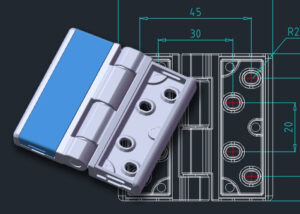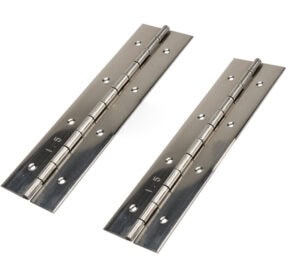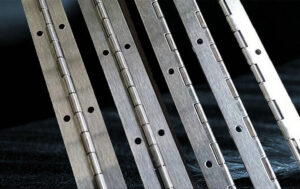Laptop hinges are fundamental components in laptop design, allowing for the smooth movement of the screen while ensuring durability. Understanding how laptop hinges are made and designed helps users appreciate their significance and take measures to protect them.
A laptop’s hinge mechanism affects not only the user’s experience but also the laptop’s lifespan, given the wear and stress hinges endure over time. Here, we explore the design, materials, types, and preventative measures that keep laptop hinges functioning optimally.
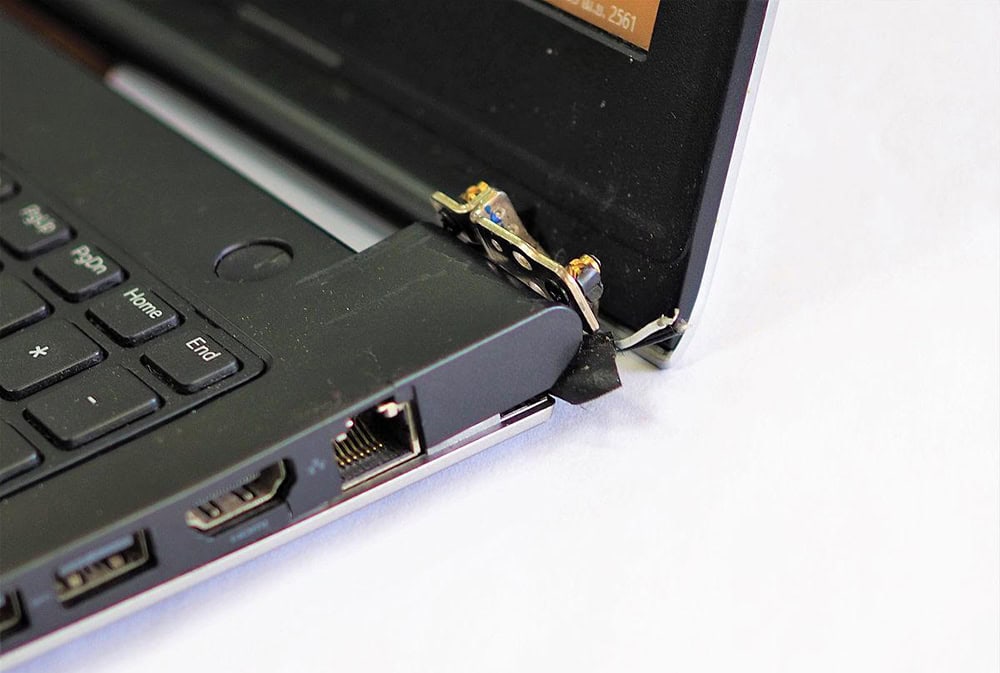
What is a Laptop Hinge?
A laptop hinge connects the display to the main body of the laptop, allowing users to open and close the screen with ease. Beyond mere connection, hinges serve to keep the screen stable at different angles, ensuring comfortable viewing positions without unwanted motion. Laptop hinges are generally made with high precision and strength to endure regular use. There are various types of laptop hinges, including piano hinges in some heavier-duty models, which can provide added stability and durability. Each hinge type is tested extensively to ensure it withstands repeated movement over years of use.
Common Types of Laptop Hinges
Laptop hinges come in a range of designs, selected based on the laptop’s weight, size, and intended functionality. The two most common types are friction hinges and torque hinges:
- Friction Hinges: These hinges provide moderate resistance, enough to hold the screen in place without the need for additional tension mechanisms. They’re often seen in lighter laptops where minimal force is needed to hold the screen steady.
- Torque Hinges: Often used in heavier laptops, these hinges apply greater resistance to hold larger screens firmly in place. Torque hinges typically rely on springs to add tension, helping maintain stability.
In some specialty laptops, soft close hinges or even detachable hinges are used to enhance usability, particularly for convertible or detachable models.
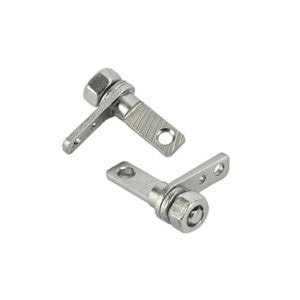
Materials Used in Laptop Hinges
Materials play a critical role in hinge durability and performance. Common materials include stainless steel, zinc alloy, and aluminum.
- Stainless Steel: Known for its strength and corrosion resistance, stainless steel is frequently used in higher-end models. It provides durability for users who need their laptops to endure frequent travel or outdoor conditions.
- Zinc Alloy: Lightweight yet durable, zinc alloy offers an effective balance between strength and cost, making it common in consumer laptops.
- Aluminum: Occasionally used in premium or ultra-light laptops, aluminum hinges provide durability without adding weight. However, due to the higher cost, aluminum is less common than other materials.
Each of these materials is carefully chosen to ensure that hinges can withstand repeated motion without loosening or breaking. In certain rugged models, heavy-duty hinges are used to further strengthen the laptop structure against rough handling.
Key Mechanisms Behind Laptop Hinge Design
Laptop hinges rely on specific mechanical systems to balance motion and stability. The two primary mechanisms are friction and torque.
- Friction Mechanism: This mechanism uses simple resistance generated between metal surfaces to control movement. It’s cost-effective and suitable for lighter laptops.
- Torque Mechanism: Torque mechanisms add controlled tension via springs, ensuring smooth movement and secure holding power. This mechanism is commonly found in models with larger screens or specialty laptops that allow for 180-degree rotation.
Designers test each hinge extensively to meet the necessary balance of flexibility and support, allowing users to open and close the laptop smoothly without undue force.
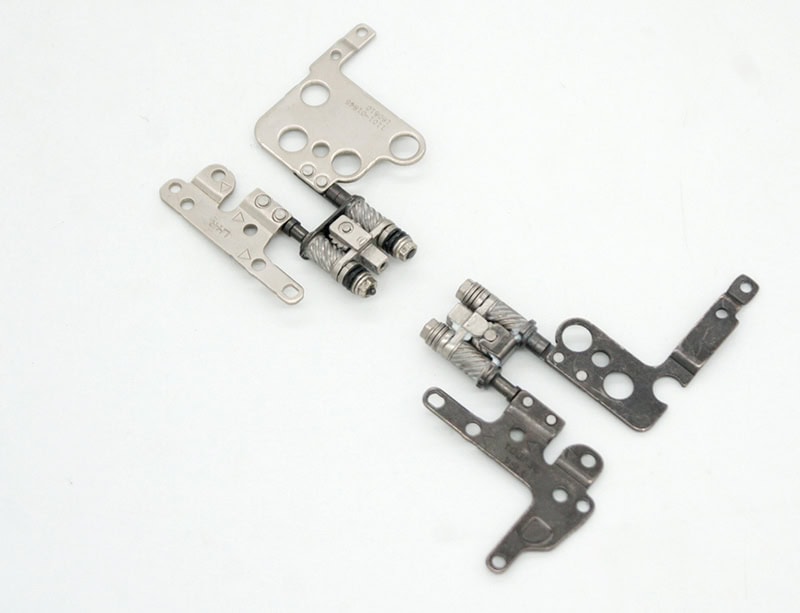
Durability and Testing of Laptop Hinges
Laptop hinges undergo rigorous testing to ensure they meet durability standards and can withstand years of regular use. Most manufacturers simulate thousands of opening and closing cycles to approximate the lifespan of the hinge.
Testing involves several factors:
- Resistance Testing: Ensures that the hinge maintains appropriate tension and doesn’t become loose over time.
- Stress Testing: Subjects the hinge to various force levels to identify weak points that could lead to breakage.
- Environmental Testing: Some hinges are tested under extreme temperatures or humid conditions to simulate real-world use.
Testing is particularly important for high-stress environments, and marine hinges or other industrial-grade hinges may be adapted for rugged laptops.
Why Laptop Hinges Break
Laptop hinges may break due to wear and tear, improper handling, or flaws in design. Metal fatigue is a common cause, as hinges are subject to frequent friction and stress. Rough handling, like opening the laptop from one side or slamming it shut, places uneven stress on the hinges, accelerating wear. In some cases, inferior materials or inadequate testing contribute to hinge failures, especially in budget models that may rely on plastic components rather than metal.
Laptop Hinge Repair: Common Solutions
When a laptop hinge breaks, repair options vary depending on the severity of the damage. Some common repair methods include:
- Hinge Replacement: Replacing the hinge with a new or reinforced component is the most comprehensive repair option.
- Reinforcement: In some cases, adhesives or custom brackets can strengthen a damaged hinge without full replacement.
- Lubrication: For minor stiffness, applying a lubricant can help restore smooth motion and reduce friction, prolonging hinge life.
Repair costs vary based on the hinge type, damage extent, and whether professional services are required. In severe cases, specialized industrial hinge production bases may supply custom parts for replacement.
Preventing Laptop Hinge Damage
Proper handling and regular maintenance can help prevent laptop hinge damage. Some key preventative measures include:
- Use Two Hands: Opening and closing the laptop with two hands distributes pressure evenly across the hinge, reducing wear.
- Avoid Moisture and Debris: Moisture and debris can accelerate wear, especially in metal components. Regular cleaning helps protect hinge components.
- Gentle Handling: Avoid excessive force when adjusting the screen’s angle, as sudden movements place unnecessary stress on the hinge.
Maintaining proper hinge care is essential for users who want to maximize their laptop’s lifespan and avoid costly repairs.
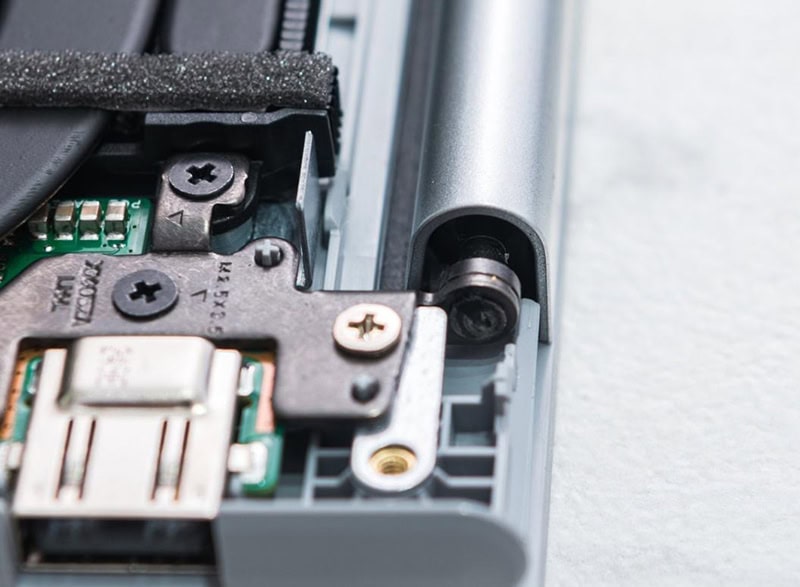
Comparing Hinge Types: Friction vs. Torque
Friction and torque hinges offer distinct benefits based on the laptop’s needs:
- Friction Hinges: Rely on simple resistance and are cost-effective. They’re ideal for lightweight laptops where minimal tension is needed.
- Torque Hinges: Use springs to add resistance, supporting heavier screens without loosening over time. This type is especially useful in high-performance models and gaming laptops that need strong, stable screens.
Some laptop manufacturers also use concealed hinges to improve aesthetic appeal, while still providing reliable performance and durability.
Future Trends in Laptop Hinge Design
Advances in laptop hinge technology focus on achieving thinner, more durable designs while offering greater flexibility. Some innovative designs now include 180-degree or flexible screen orientations, enhancing user versatility for convertible and hybrid models.
Future developments may include enhanced aluminum hinges for lighter laptops, and ongoing improvements in material science could lead to even more durable, lightweight hinges that maintain stability without adding bulk. As laptops continue to evolve, hinge technology is adapting to support more versatile devices that can handle diverse user demands.
Conclusion
Laptop hinges are carefully engineered for smooth movement, durability, and stability, with modern designs offering flexibility and user customization. By understanding their design and practicing proper care, users can extend hinge lifespan and reduce the likelihood of breakage. As hinge technology continues to evolve, laptop users will benefit from increasingly durable and versatile options designed to support a range of activities and environments.

